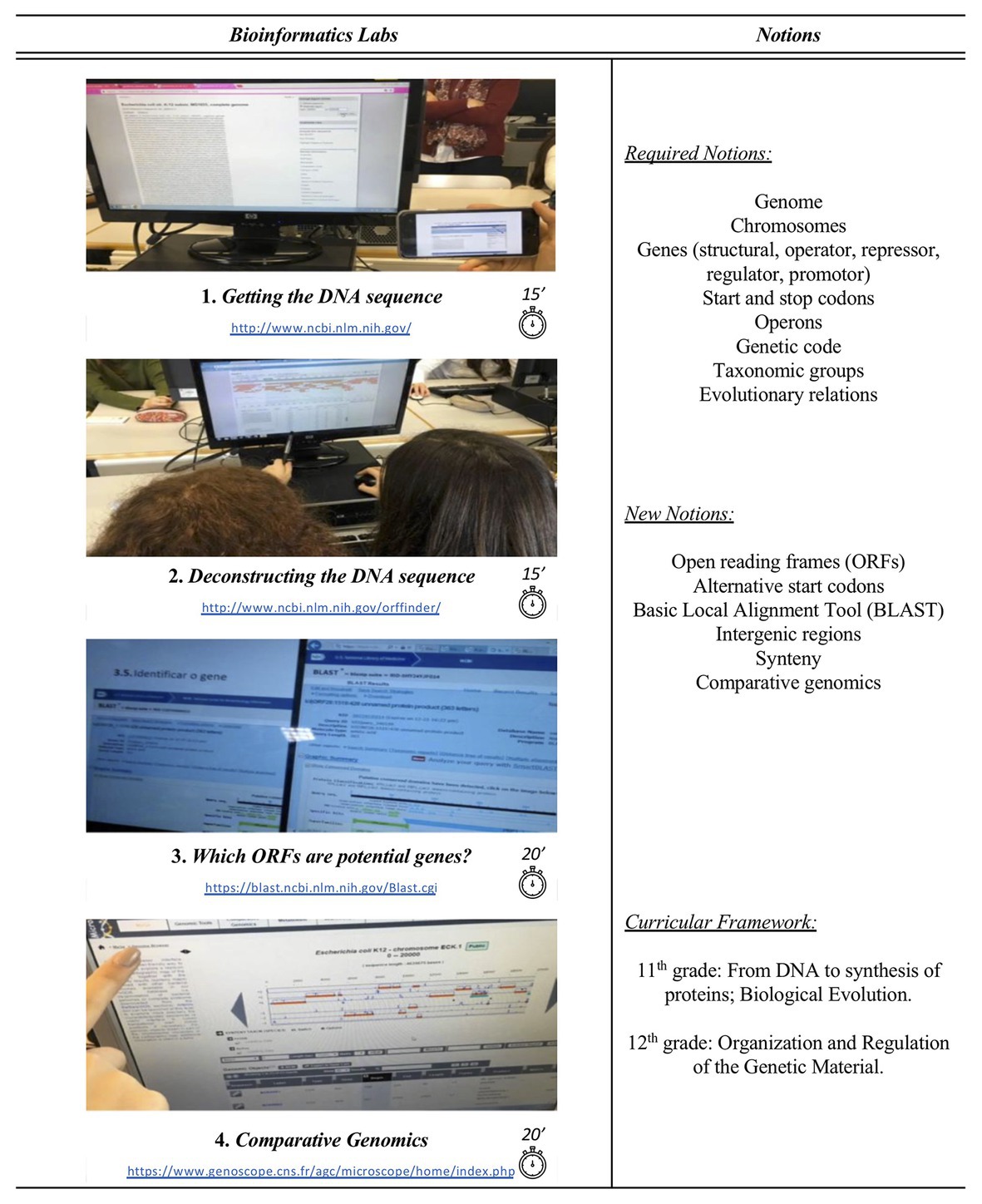Some Known Details About Bioinformatics Tutor
Some Known Details About Bioinformatics Tutor
Blog Article
Bioinformatics Tutor - The Facts
Table of ContentsThe Ultimate Guide To Bioinformatics TutorThe 3-Minute Rule for Bioinformatics TutorNot known Factual Statements About Bioinformatics Tutor An Unbiased View of Bioinformatics TutorGetting My Bioinformatics Tutor To Work
Of the total amount participants included in the training, 80% were pupils from public college establishments, while the continuing to be 20% originated from exclusive organizations. To receive a certificate of participation, students were required to participate in a minimum of 90% of the complete training hours. As a result of this requirement, an impressive 95% of the participants effectively obtained their certifications, having not just met the minimum attendance standards but also completed all assigned activities throughout the training.
During the height of the COVID-19 pandemic, especially between June and August 2020, the job group was tasked with organizing specialized training in bioinformatics. This training was especially targeted at students from the research team Core for Study in Applied Computer at the Federal College of Pará (UFRA) The adaptation to remote understanding platforms as a result of the pandemic developed a possibility to check out new training techniques and electronic tools that boosted both reach and efficiency.
This course was made to give an accessible yet thorough overview of Artificial Intelligence methods, especially as used in bioinformatics (Bioinformatics Tutor). This virtual format enabled participation from pupils across Brazil, many of whom may not have had the opportunity to attend in-person sessions.
The Definitive Guide for Bioinformatics Tutor
Roughly 50% of the complete training hours were devoted to practical tasks where pupils developed smart designs and applications in a range of clinical domain names, consisting of genetics, molecular biology, and ecological data evaluation. These platforms made it possible for trainees to involve in real-time information control, version training, and algorithm testing.
The course drew in 80 individuals in total amount. Sixty of them were connected with numerous higher education establishments in the state of Pará, while the staying twenty came from organizations situated in five various other Brazilian states. This wide geographical representation highlighted the nationwide passion in bioinformatics and the expanding demand for specialized skills around. By presenting Artificial Intelligence in a relevant and practical context, the initiative served to link the void between concept and real-world application, supplying students with a solid structure for future research study or employment in the field.
The training effort developed component of a broader scholastic outreach initiative known as the Bioinformatics when driving job. This task has, over the years, presented lots of trainees to the globe of bioinformatics and computational biology. The events held under this umbrella campaign have occurred throughout multiple areas and years, as summed up in Table 1 (Checklist of occasions, locations, years, and total numbers of trainees and teachers)
Numerous of these groups, originally brought with each other by their involvement in training occasions, have actually because gone on to generate independent clinical research study in collaboration with regional academic establishments. The training not only cultivated scientific thinking within the context of bioinformatics but likewise triggered joint partnerships that extended beyond the training atmosphere.
About Bioinformatics Tutor
The exact same team, excluding IH and RR, likewise acted as tutors for the useful training modules. Funding for the job was offered through the grant 88887.200562/ i thought about this 2018-00 from CAPES.
The Federal College of Pará's Office of Research (PROPESP/UFPA) additionally gave financial backing, specifically for the production of the final manuscript. The authors declare no economic or industrial conflicts of passion that continue reading this can have affected the research. Moreover, all interpretations and viewpoints revealed in this write-up are only those of the writers and do not necessarily reflect those of their respective organizations, the publisher, editors, or reviewers associated with the magazine procedure.

Some Of Bioinformatics Tutor
From a pedagogical point of view, the training technique used in the training was deliberately interactive. Classes were conducted in a manner that urged pupil involvement and discussion, exceeding memorizing memorization to discover how concepts are established, applied in day-to-day life, and tested in academic setups. The training approach concentrated on supporting both solid and having a hard time pupils, supplying individualized support, and structure self-confidence with continual mentorship and perseverance.

Each group, containing approximately 36 individuals, was sustained by 3 coaches-- many of whom were postdoctoral scientists with customized knowledge. These mentors not only aided design the group tasks but additionally promoted their implementation, making sure that each research study concern was both properly tough and pertinent. The objective was to supply a naturally realistic context that participants could explore with open-ended objectives and access to curated datasets.
For extra insights right into the methodology and results of this project-based understanding technique, visitors are directed to S1 Text, that includes in-depth descriptions of the instructional structure, evaluation approaches, and project styles used in the training sessions.
Get This Report on Bioinformatics Tutor
Of the overall participants included in the training, 80% were students from public greater education and learning institutions, while the remaining 20% came from personal institutions. To qualify for a certification of engagement, students were needed to participate in at least 90% of the complete training hours. Significantly, beyond the students that registered in the training sessions, 7 knowledgeable instructors took part in providing the training courses, while 3 dedicated research teachers worked with the general training procedure. Around 50% of the overall training hours were committed to functional tasks where pupils developed smart versions and applications in a variety of clinical domains, including genes, molecular biology, and ecological information analysis. The training not just cultivated scientific reasoning within the context of bioinformatics yet likewise sparked joint relationships that expanded beyond the training setting.
Report this page